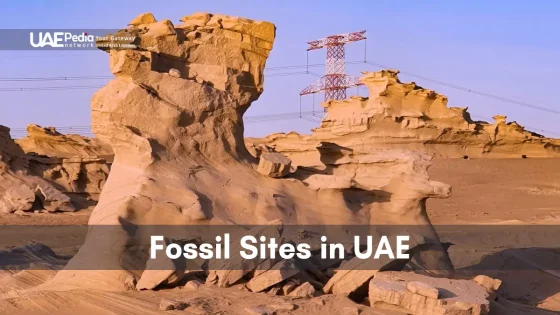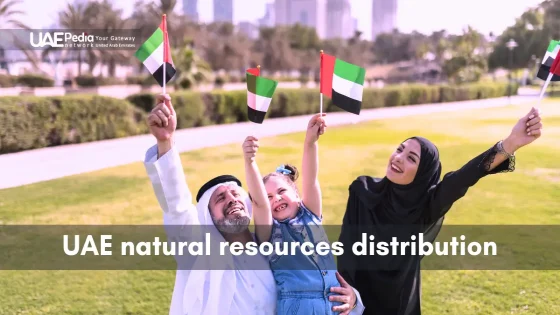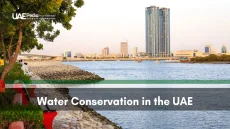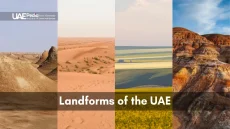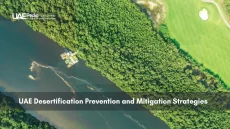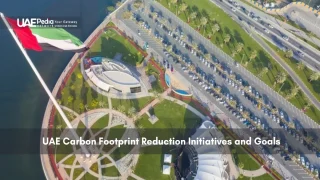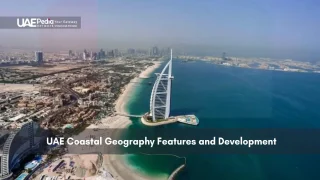What if deserts weren’t as dry as they seem? Beneath the UAE’s sun-baked surface lies a treasure trove of 640 billion cubic metres of groundwater—though only 3% is fresh. Winter rains briefly awaken ancient aquifers, creating ephemeral waterways that vanish as quickly as they appear. This delicate balance between scarcity and abundance fuels one of the world’s most innovative water management stories.
Rainfall here isn’t just weather—it’s a lifeline. Seasonal downpours recharge aquifers that date palm farmers have relied on for centuries, while modern groundwater monitoring systems track every precious drop. Traditional falaj irrigation channels now share the stage with desalination plants producing 42% of the country’s drinking water. The result? A living mosaic where Bedouin wisdom meets AI-powered distribution networks.
We’ll explore how 21st-century technology amplifies nature’s rhythms—from cloud seeding projects boosting rainfall to wastewater treatment fueling green spaces. You’ll discover why 75% of groundwater still feeds agriculture, and how solar-powered desalination could reshape the equation. Along the way, expect maps revealing hidden water corridors and stories of communities thriving in harmony with arid climates.
- Winter rains trigger temporary river formations and aquifer recharge cycles
- Groundwater provides 90% of agricultural needs despite limited freshwater reserves
- Modern infrastructure complements ancient water-harvesting techniques
Exploring Natural Water Resources and Aquifer Management
Imagine a hidden ocean beneath your feet—600 times the volume of Lake Mead. The country’s 640 billion cubic metres of underground reserves form layered time capsules, with only 3% fresh enough for direct use. Winter rains play hide-and-seek with the desert, where 85% evaporates before reaching thirsty aquifers.
Groundwater: A Vital Source in an Arid Region
Shallow aquifers near the surface act like nature’s sponge—gravel and sand layers filter rainwater, while limestone formations store it. Farmers in the Bajada region still rely on these renewable reserves for 70% of crop irrigation. But dig deeper, and you’ll find ancient “fossil” aquifers trapped between marl and dolomite rock. These non-renewable pools formed 10,000 years ago during wetter climates.
Recharge, Quality, and Challenges in Groundwater Utilization
Modern sensors now track aquifer health down to the millimetre. “We’re not just measuring water levels—we’re decoding desert hydrology,” explains a local hydrologist. Despite advanced monitoring, three hurdles persist:
| Challenge | Impact | Solution |
|---|---|---|
| High evaporation | Only 12% of rain reaches aquifers | Recharge dams |
| Saltwater intrusion | 30% coastal well contamination | Injection barriers |
| Overpumping | Levels drop 1.5m/year | Smart metering |
Traditional aflaj channels—some dating back 3,000 years—now share the landscape with solar-powered treatment plants. Recent policies cut groundwater use by 18% in key farming areas, redirecting flow to protect major water bodies. Yet the balance remains delicate, like walking a tightrope between past and future.
The Role of UAE River Systems in Sustainable Water Management
Picture a dance between ocean and desert—saltwater transformed into freshwater while ancient aquifers get a modern makeover. This balancing act powers one of the planet’s most inventive hydration strategies. At its core? A dynamic duo: cutting-edge desalination plants working alongside nature’s underground reservoirs.
Balancing Saltwater Solutions With Earth’s Hidden Reserves
Desalination plants like Tawilah’s massive facility—capable of producing 100 million gallons daily—use multi-stage flash distillation. Think of it as a high-tech rainmaker: seawater boils, vaporizes, then condenses into pure H2O. But here’s the twist—surplus freshwater doesn’t just flow to taps. “We’re redirecting 15% to recharge programs,” shares a Masdar City engineer. Their pilot project injects treated water into coastal aquifers, creating freshwater barriers against saltwater intrusion.
When Tech Meets Terrain: Reinventing Water Capture
Flash floods become friends thanks to 130 recharge dams lining wadis. These concrete sentinels trap stormwater, giving it time to seep into thirsty groundwater reserves. Smart sensors now track every drop:
| Technology | Function | Impact |
|---|---|---|
| AI flow meters | Monitor dam levels | 94% capture rate |
| Satellite imaging | Map aquifer recharge | 18% faster recovery |
| IoT quality sensors | Detect contaminants | 99.7% purity |
Summer’s scorching heat actually boosts progress. Desalination plants ramp up production when AC use peaks, creating surplus for both immediate needs and underground storage. Government-private partnerships fuel this synergy—IWPPs like Taweelah’s $1.1 billion plant merge water and power production, slashing energy use by 40%.
The result? A water network that’s both bulletproof and biodegradable-friendly. Ancient infiltration techniques meet real-time data dashboards, proving innovation flows where need runs deepest.
Traditional Water Systems and Cultural Heritage in the Emirates
Ever wonder how civilizations thrived here long before smart sensors existed? The answer flows through 3,000-year-old aflaj channels—gravity-fed waterways that turned sand into sustenance. These stone-lined arteries still pulse beneath date palm groves, whispering tales of communal water-sharing etched into UNESCO-listed landscapes like Al Ain’s oasis.
Aflaj Irrigation Ditches: History and Modern Relevance
Picture this: farmers gathering at dawn to divvy up water shares using sundials. The aflaj system’s genius lies in its simplicity—sloping channels guide mountain springs to fields without pumps. “Our ancestors built resilience into every stone,” notes a heritage guide in the Hajar foothills. But these open channels face modern threats. Unchecked discharge and pollution risk 15% of active networks—a challenge the government tackles through restoration grants and AI flow trackers.
Integrating Age-Old Techniques With Cutting-Edge Technology
Solar-powered sensors now monitor water quality in real time, slashing waste by 40% in pilot areas. Drones map channel blockages, while recharge dams boost groundwater reserves during winter rains. The result? Ancient distribution ethics meet IoT precision. Take Wadi Bih’s smart aflaj—it uses 21st-century metering to enforce fair shares, just like its Bronze Age blueprint intended.
This fusion powers traditional farming practices with 30% less energy than modern pumps. Desalination plants even borrow aflaj-inspired gravity feeds for wastewater treatment. It’s not just preservation—it’s evolution, where every innovation tips its hat to the past.
Looking Ahead: UAE’s Natural Beauty and Future Water Innovations
What if every raindrop could power a city? Visionaries in Masdar City are testing solar-powered desalination plants that turn seawater into freshwater using 50% less energy. These pilot projects—paired with AI-driven distribution grids—show how tomorrow’s water production might hum alongside ancient aflaj channels.
Imagine smart reservoirs shaped by desert dunes, where groundwater recharge stations double as art installations. New infrastructure investments prioritize dual-purpose designs: solar farms that generate power and harvest condensation. Even wastewater gets star treatment—recycled through gardens that bloom where arid landscapes once dominated.
The secret sauce? Blending Bedouin water wisdom with robotics. Think sensor-equipped date palms signaling irrigation needs, or recharge dams guided by ancestral flood patterns. Private-public partnerships fuel this alchemy, ensuring innovations scale faster than sandstorms.
As renewable tech reshapes desalination, one truth remains: solutions flow where culture and curiosity collide. Picture smart oases where every drop tells a story—of past ingenuity meeting future grit. Ready to watch this liquid revolution unfold? Stay thirsty, friends. The best chapters are still being written.
Nope—most natural waterways are seasonal, called wadis, which surge briefly after winter rains. Think desert slot canyons transforming into rushing streams! The government enhances these flows with dams and recharge systems to capture precious rainwater.
Two main sources: massive seawater desalination plants (providing 42% of supply) and carefully managed groundwater. Over 120 dams help recharge underground aquifers, while smart tech tracks usage to prevent over-extraction. Packed with minerals, some wells even supply natural mineral water brands!
By pairing reverse-osmosis plants with solar farms—like the new Jebel Ali facility—to cut energy use. Brine byproduct gets repurposed for salt harvesting or industrial cooling. It’s a high-tech dance to keep taps flowing without harming marine ecosystems.
Ancient gravity-fed irrigation ditches that date back 3,000 years! Some communities in Al Ain and Fujairah still maintain these UNESCO-listed channels for date farms. Modern sensors now monitor water flow alongside traditional split-timers—blending heritage with IoT innovation.
Absolutely. The 2036 Water Security Strategy aims to slash groundwater use to 21% by recycling 95% of treated wastewater for landscaping and industry. Cloud-seeding projects and AI-powered leak detection in pipes also help stretch every drop further.
Yes! Hatta Dam’s turquoise reservoir offers kayaking, while Al Qudra Lakes near Dubai showcase wetland restoration. For deep nerds, the Sheikh Zayed Water Resources Exhibition in Al Ain reveals how sensors and satellite mapping keep aquifers healthy. Bring your curiosity—and a reusable water bottle!

